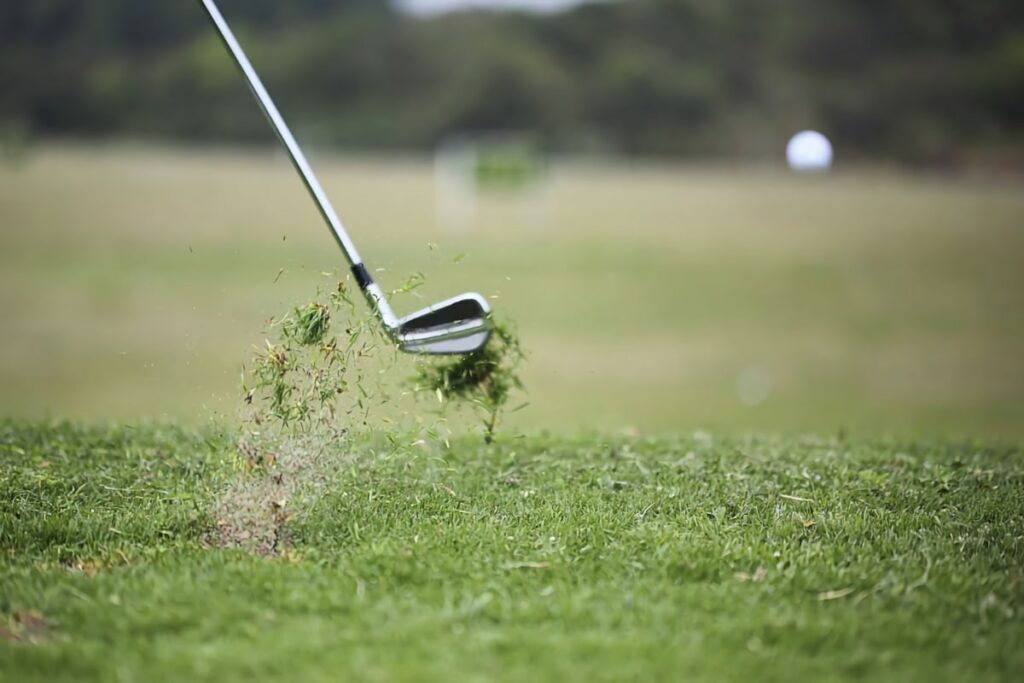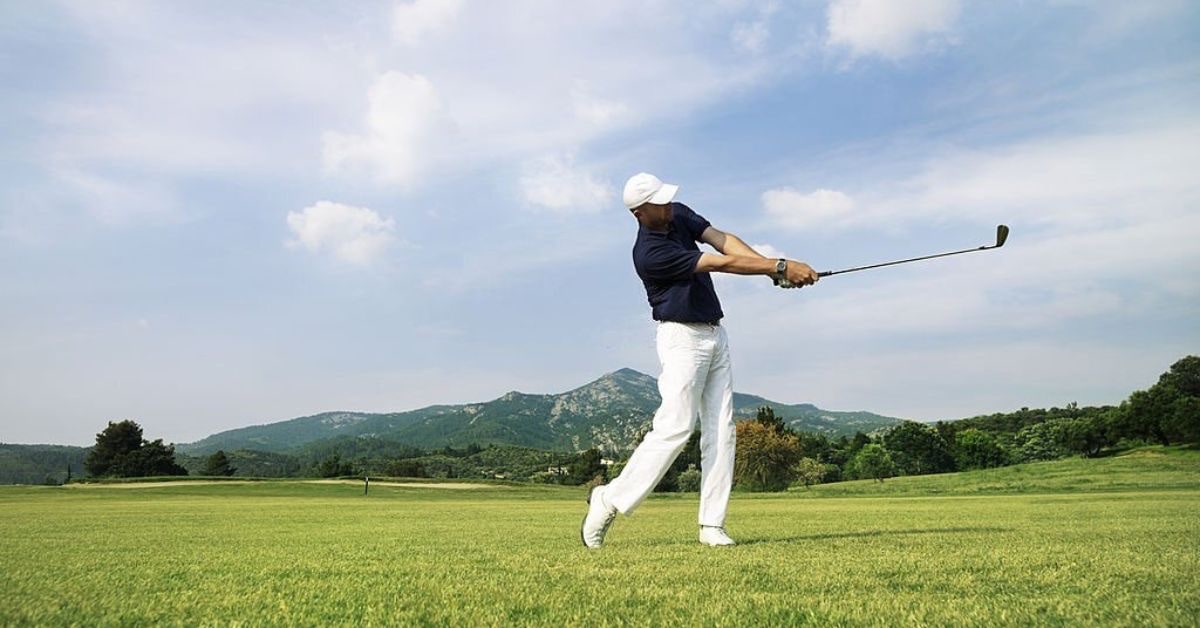Until recently, I struggled hugely with hitting my irons excessively high and short.
There’s nothing worse than a high, floaty ball flight with very little distance. The problem compounds when hitting into a headwind — the ball seems to travel nowhere.
Many amateur golfers suffer from this exact problem! Fortunately, I figured out where I was going wrong — it’s all down to dynamic loft (more on that later).
In this article, you’ll learn the reasons why you’re hitting irons too high and short. In addition, you’ll find 4 key tips to help you lower your ball flight for more distance.
Ready? Let’s waste no more time!
Hitting Irons Too High and Short
If you’re hitting your irons too high and short, it’s because you’re delivering too much dynamic loft into the ball at impact. To fix this, press your hands forward at address and keep them forward through impact, rotating through the ball. This will produce lower ball flights, with greater distances.
In short, higher ball flights give you less control — particularly in windy conditions. This is because the ball is subject to more spin, which severely limits the distance.
Many golfers try to scoop the ball to get it airborne, rather than relying on the natural loft of the clubface. This is also known as “picking” the ball.
By doing this, the dynamic loft — AKA the true loft on the clubface at impact — will be excessively high, causing the ball to launch too high.
PRO TIP: Divot pattern is a good indicator of dynamic loft. If you take virtually no divot after the ball, it’s likely that you’re picking the ball.
Instead, you want to hit down and compress the ball. This will deliver less dynamic loft, and produce the most consistent strike — with a divot after the ball.
In the next section, you’ll find 4 actionable tips to help you hit down on the ball with your iron shots, lower your ball flight, and increase your distances.

How to Lower Ball Flight With Irons
To hit punchy, low irons shots, you need to change how you deliver the clubface into the ball at impact. Ultimately, you want to compress the ball — rather than scoop it.
Here are 4 tips to focus on for lower iron shots:
- Forward press at address
- Hands forward at impact
- Rotate through the impact
- Finish with low hands
Let’s dive into each tip in some detail.
1. Forward Press at Address
The first step to lowering ball flight is to set up with a slight forward press at address.
Put simply, that means pushing your hands slightly toward the target at setup. This adds a forward shaft lean, which encourages you to hit down on the ball during the swing.
However, too much shaft lean at address can sometimes cause hooked shots as the clubface can have a tendency to stay closed when delofted.
Ultimately, a slight forward press should strike a good balance between the accuracy of your ball striking, whilst encouraging a lower ball flight.
2. Hands Forward at Impact
At the point of impact, focus on keeping your hands forward of the ball.
The angle of the shaft at impact is probably the biggest factor when it comes to hitting your irons shots high or low. Often, amateur golfers will strike the ball with the shaft pointing vertically upwards — or even angled away from the target.
Remember, you need to reduce the dynamic loft to produce a lower ball flight.
Keeping your hands forward at impact leans the shaft toward the target. Effectively, this delofts the clubface, resulting in a lower, punchy shot.
Also, it encourages you to strike down on the ball. The best iron players in the world aim to compress the ball into the ground and rely on the natural loft of the club to send the ball airborne. Hence, the divot is taken after the ball.
Steps 1 and 2 are strongly connected. Essentially, a slight forward press at address will encourage you to return to a similar position at the point of impact.
Take a look at Dustin Johnson’s iron swing below. It’s a great example of a clear forward press at address, which helps to push his hands forward at impact:
3. Rotate Through the Impact
It’s also important to rotate the body through impact to keep the ball flight low.
If your hips and upper body offer very minimal turn through the iron swing, you will tend to rely on using your arms to swing the club through the ball.
This often causes a flipping motion, where the hands attempt to scoop the ball toward the target — delivering an unwanted amount of high dynamic loft.
Instead, focus on having a strong rotation during and after the point of impact. This will allow you to use the power of your whole body — rather than just your arms.
A lack of rotation is a common cause of losing distance with your irons.
4. Finish With Low Hands
Finally, have the sensation of finishing with low hands in the follow-through.
Essentially, if you want to keep the ball flight low with your irons, you should stop your hands short of your shoulders in the follow-through after impact.
Conversely, finish with your hands above your head to hit a higher shot with your irons.
In a GolfTV series featuring Tiger Woods, he explained how he changes the trajectory of his iron shots by varying where he stops his hands:
“My dad had a very easy way of explaining it. You want to hit it low, stop your hands short of your shoulders. You want to hit it normal, stop it at your head. If you want to hit it high, have your hands finish above your head.”
Tiger Woods via GolfTV
You heard it from the master himself!
Check out the video below by TXG, which offers a great demonstration of the changes you should make to hit low, punchy iron shots at greater distances:
Conclusion
In summary, if you’re hitting your irons too high and short, it’s because you’re delivering too much dynamic loft into the ball at impact.
To fix this, focus on these 4 key steps:
- Forward press at address — encourages you to hit down on the ball
- Hands forward at impact — helps to deliver a lower dynamic loft
- Rotate through the impact — uses the body rather than just the arms
- Finish with low hands — promotes better contact and lower ball flight
Ultimately, lowering your ball flight will add consistency to your iron shots. It eradicates the wind variable, helping you play better in all types of conditions.


